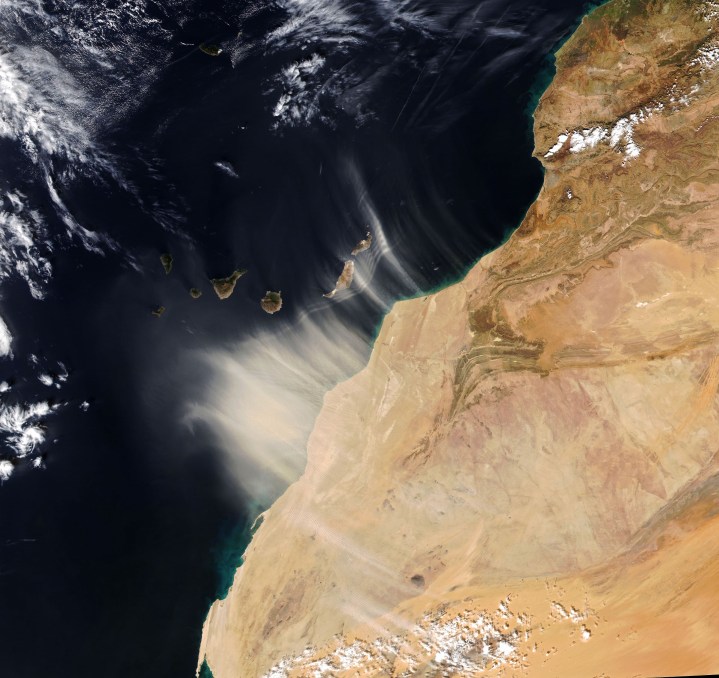Among the experiments and supplies delivered to the International Space Station (ISS) today was a new spectrometer instrument that could help show how small particles of dust can have a big impact on the Earth’s climate. The Earth Surface Mineral Dust Source Investigation (EMIT) mission will map the way different types of dust move across the planet’s surface and see how this affects temperatures.
A big factor in how different types of dust affect temperatures is their color, as darker dust particles like those rich in iron adsorb heat and warm the air around them, while lighter particles like those rich in clay reflect heat. “Normally in climate models, we model dust as yellow — the average color of all types of dust — but if you’ve ever gone to a desert region, you’ll know that sand is not all one color,” Natalie Mahowald, EMIT deputy principal investigator, said in a statement. “So this assumption that it’s uniform across the globe doesn’t reflect what’s happening in reality.”

EMIT will investigate 10 particular dust varieties and map where they originate and how they move across the planet’s surface, as dust particles can travel thousands of miles.
“There is a lot of variability in the dust emissions — every second there’s some variability due to shifts in wind or rain, and there is seasonal, annual, and longer-term variability,” Mahowald said. “EMIT will provide information about the source regions of dust, which we combine with other atmospheric and climate information to evaluate the changes in emissions and better understand what has been going on in the past and what will happen in the future.”
The EMIT instrument is a spectrometer, meaning it splits light into wavelengths and records the results. By looking at what wavelengths are absent from the light because they have been absorbed by the dust particles, researchers can see what the particles are composed of. The instrument will be able to scan strips of land 50 miles wide, imaging over 4 miles per second.
“In the beginning, scientists worked with single spectrometers,” said Robert O. Green, EMIT’s principal investigator. “Now we’re going to be effectively flying 1,280 spectrometers over the surface of the Earth, each collecting hundreds of measurements per second.”
Editors' Recommendations
- China’s space station was hit by space junk
- Crewed Soyuz launch to space station suffers rare late abort
- How to watch Crew-8 arrive at the space station tonight
- How to watch SpaceX Crew-8 launch to the space station tonight
- Crew-8 astronauts head into quarantine ahead of Space Station launch




